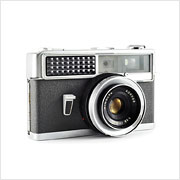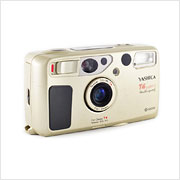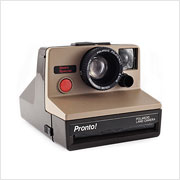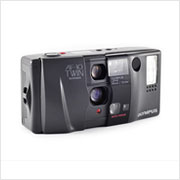Minolta Hi-Matic
The original Minolta Hi-Matic is one of the first mainstream fixed-lens rangefinders and the first Minolta to feature automatic exposure. The Hi-Matic was also rebadged and sold in the United States as the Ansco Autoset and gained some notoriety after American astronaut John Glenn purchased one at a local drug store shortly before embarking on the Mercury-Atlas 6 space mission. Although there were other cameras on the Friendship 7 spacecraft, Glenn burned through five rolls of film with his new camera while on board, shooting many historical images including this photograph of the earth.



